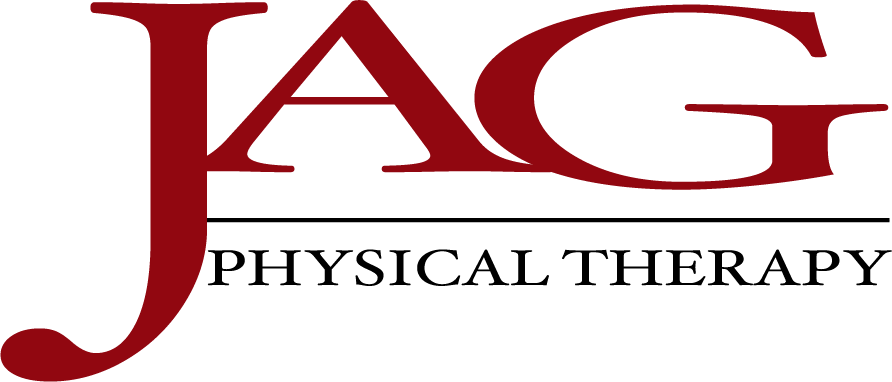Hand therapy is the art and science of evaluating, treating, and rehabilitating injuries in the upper extremities. It helps patients restore lost strength, function, motor abilities, and movement in their shoulders, elbows, forearms, wrists, or hands. The treatments are administered by a medical professional known as a hand therapist.
A certified hand therapist (CHT) is an occupational therapist (OT) or physical therapist (PT) highly trained in kinesiology, anatomy, and physiology. To get a hand therapy certification, an OT or PT must accumulate at least three years with 4,000 hours of direct practice in hand therapy. That’s in addition to passing an exam to demonstrate competency in the clinical skills and theory of hand rehabilitation.
JAG PT is New York, New Jersey, and Pennsylvania’s top source for compassionate and effective hand therapy. Contact us to learn more about this specialization, or schedule your hand therapy appointment at your nearest JAG PT location today.
What Conditions Does Hand Therapy Treat?
Our hand therapists at JAG Physical Therapy are specially trained and fully certified to treat upper extremity injuries and conditions, such as:
Swelling
Trauma from injury or repeated strain on either arm can cause swelling in joints or muscles. Swelling is often an indication of bruised muscle fibers, torn ligaments, overworked joints, or inflamed tissues. It’s usually accompanied by pain, tenderness, numbness, stiffness, or tingling. At JAG PT, we help our patients relieve conditions like these with treatment methods from hand therapy to sports medicine and more.
General Pain
Pain in the upper limbs, either chronic or sporadic, may be linked to physical impairment, injury, or a physiological condition. Common culprits of upper extremity pain include carpal tunnel syndrome, tendonitis, and rotator cuff tears—these are mainly caused by overuse and trauma.
Stiffness
Arm joints, tendons, and ligaments can stiffen due to an underlying condition (infection, inflammation, arthritis, fibromyalgia, or others), lifestyle habits, changes in weather, or aging. In mild cases, stiffness makes performing certain shoulder, elbow, wrist, or finger movements difficult or uncomfortable. But it can worsen over time, leading to pain and seized joints in the affected arm.
Fine Motor Problems
Fine motor skills describe the dexterity and coordination needed to perform intricate hand exercises such as writing, buttoning a shirt, and handling small objects. Problems with fine motor abilities are common among children with developmental, genetic, or nervous conditions such as cerebral palsy, dyspraxia, and sensory processing disorder. Adults can also lose their fine motor skills due to a traumatic injury to the wrist or hands or a neurological condition. At JAG PT, our hand therapists utilize a variety of techniques from occupational therapy to help patients of all ages build and restore their fine motor control.
Tennis Elbow
Tennis elbow (lateral epicondylitis) manifests as pain in the elbow from overloaded forearm tendons and overused wrist extensor muscles. While this condition is common among tennis players, anyone may be affected by it, not just athletes. Any activities requiring repetitive wrist twists, such as painting, plumbing, and hammering, can cause tennis elbow.
Arthritis
Arthritis is an umbrella term for more than 100 conditions that cause pain, swelling, stiffness, and reduced range of motion in joints. According to the CDC, arthritis is the leading cause of disability among US adults. The skilled therapy staff at JAG PT helps patients with arthritis restore movement, relieve pain, and reduce inflammation in the affected parts of the arm.
Fractures
Our hand therapy treatments aim to speed up recovery from fractured bones or joints along the arm and hands. Such therapies center around bone healing, pain management, and function restoration.
What Techniques Are Used in Hand Therapy?
We use various methods and tools to customize each patient's hand therapy treatment plan based on the underlying problem and the desired results. Here are five examples of the treatment techniques used in hand therapy:
- Healing and Wound Management – Recovering from an acute injury starts with proper wound management, from cleaning and dressing to stitching. Healing and wound management treatments vary widely depending on the nature and stage of the injury. For instance, hand therapists can use custom splints to immobilize certain parts of the arm so they can heal properly or cast a fractured joint to promote self-repair.
- Scar Management – The scar tissue left behind by healed wounds can bind muscles, skin tissue, and tendons, restricting movement in the scarred area. Therapeutic scar management softens and desensitizes a scar to minimize its effect on the hand’s range of motion and feeling.
- Tissue Mobilization Exercises – Tissue mobilization uses range-of-motion exercises, mainly extensions and stretches, designed to restore natural movement in arm muscles and joints.
- Strengthening Programs – Upper extremity strengthening exercises help the arm muscles and joints regain their strength after healing from injury, surgery, or infection. Common strength exercises include FlexBar exercises and controlled weight raises, curls, and presses.
- Soft and Deep Tissue Massage – Deep tissue massage helps relieve tension and stiffness in arm muscles and fascia. On the other hand, soft tissue massages stretch and soothe the muscles, improving flexibility and range of motion along the arm.
Is Hand Therapy Right for You?
Hand therapy from a certified hand therapist can rehabilitate your upper extremities after an illness or injury on your shoulder, fingers, and everything in between. However, each case is unique and must be evaluated by a specialist who then designs an effective treatment plan.
We are more than happy to answer all your questions on hand therapy, and design a customized treatment plan made just for you. Contact us to learn more or schedule an appointment to visit any one of our JAG Physical Therapy locations in NY, NJ, or PA, and we’ll help you start your journey to healthier, stronger hands.
Learn More About Physical Therapy from JAG PT:
- Strengthening Your Hands After A Fracture: Tips and Exercises for a Quicker Recovery
- 4 Ways to Treat Carpal Tunnel Syndrome
- What is Dry Needling?
